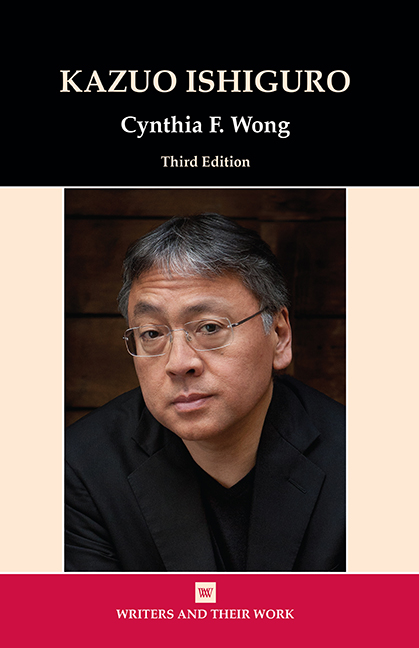Book contents
- Frontmatter
- Contents
- Acknowledgements
- Preface to the Third Edition
- Biographical Outline
- Abbreviations and References
- Introduction
- 1 Ishiguro as an International Writer
- 2 Reading the Novels
- 3 Narrative and Memory: A Pale View of Hills
- 4 Deflecting Truth in Memory: An Artist of the Floating World
- 5 Disclosure and ‘Unconcealment’: The Remains of the Day
- 6 Seizing Comprehension: The Unconsoled
- 7 Odd Failures of Guardianship in When We Were Orphans and Never Let Me Go
- 8 Parody and Performance in Nocturnes
- 9 Cloaked Memories in The Buried Giant
- Notes
- Select Bibliography
- Index
2 - Reading the Novels
- Frontmatter
- Contents
- Acknowledgements
- Preface to the Third Edition
- Biographical Outline
- Abbreviations and References
- Introduction
- 1 Ishiguro as an International Writer
- 2 Reading the Novels
- 3 Narrative and Memory: A Pale View of Hills
- 4 Deflecting Truth in Memory: An Artist of the Floating World
- 5 Disclosure and ‘Unconcealment’: The Remains of the Day
- 6 Seizing Comprehension: The Unconsoled
- 7 Odd Failures of Guardianship in When We Were Orphans and Never Let Me Go
- 8 Parody and Performance in Nocturnes
- 9 Cloaked Memories in The Buried Giant
- Notes
- Select Bibliography
- Index
Summary
After the publication of his second novel, An Artist of the Floating World, Ishiguro said that he was exploring how his first-person narrators used ‘the language of self-deception and self-protection’ (GM 337) to convey their life stories. On the surface, Ishiguro's protagonists appear as ‘self-conscious narrators’ who are distinctly aware of themselves as writers of their own stories; as they are observing or remembering their lives, they also comment selectively on how they are ‘writing, thinking, speaking, or ‘‘reflecting’’ ‘ that life. The narrator 's dual roles of reading significance into and then documenting the details of that life are linked to a particular kind of self-deception that interested Ishiguro. He sympathizes with how the deception signifies a character 's guarding against emotional injury or harm; accordingly, an actual reader could identify with the ethical dilemmas forcing the characters into forms of simultaneous deception and protection.
In his first two novels, characters attempt to rebuild their lives following one of the century's worst calamities upon their society, the bombings of Hiroshima and Nagasaki. Ishiguro uses the historical situation to explore his characters’ emotions. In manifesting self-dignity, his characters turn inward for courage to speak about their lives years, even decades, later when they are facing an important turning point in their own or their family 's lives. In The Remains of the Day, Stevens's position as butler compels an economy of speaking as well. To voice one's emotions at all times would appear out of character for these narrators, for silence is as much an aspect of their stories as the words that they eventually utter. People ‘manage reality by their constructions’, writes postmodern critic Ihab Hassan, and silence as one form of such a construction ‘fills the extreme states of the mind – void, madness, outrage, ecstasy, mystic trance – when ordinary discourse ceases to carry the burden of meaning’.
Such gaps – such silences filling the void – in the narrators’ stories signal an important reading strategy crucial to Ishiguro's development of his characters. How Ishiguro employs gaps to unveil his characters’ pain of suffering approximates the artistic effect described by social critic David B. Morris:
- Type
- Chapter
- Information
- Kazuo Ishiguro , pp. 15 - 26Publisher: Liverpool University PressPrint publication year: 2019

